Company Mission
- A statement of intent shared by the management of the company (Chaudron, 2002).
- A decent company mission statement would also include the values and priorities (Chaudron, 2002).
- It revolves around correct attitudes and orientation.
- Should include the expectations of the company’s stakeholders.
- Should define the checkpoints for the company’s performance on a long-run scale (Chaudron, 2002).
At all times, any company depends on a strict direction that would determine its future success and the ability to achieve organizational objectives. Therefore, the concept of company mission can be outlined as a statement of intent shared by the management of the company (Chaudron, 2002). In order to be considered a proper company mission, the latter should include the description of the firm’s product and technological areas of focus. A decent company mission statement would also include the values and priorities that were established by the decision-makers functioning in the organization (Chaudron, 2002). There is an explicit need for an exact mission because it revolves around correct attitudes and orientation rather than a mere statement of measurable objectives.
On a bigger scale, a well-designed mission statement should include the expectations of the company’s stakeholders and define the checkpoints for the company’s performance on a long-run scale (Chaudron, 2002). When creating a mission statement, one should consider the desires and beliefs of both the entrepreneur and their clients. It is also important to redefine the mission statement from time to time so as to comply with all the requirements without distressing any critical relationships between the actors involved in the process (Chaudron, 2002). For the most part, mission statements reflect the company’s willingness to display the commitment to the quality of their services and the ability to pay attention to customers.
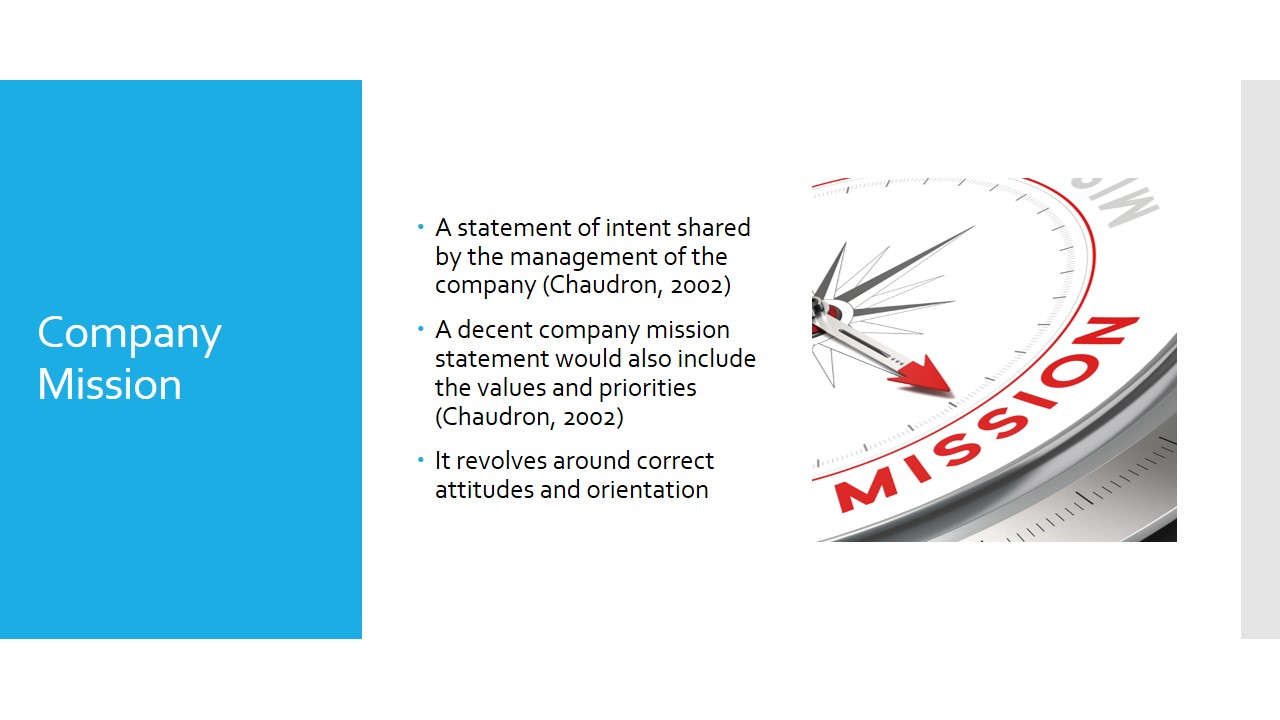
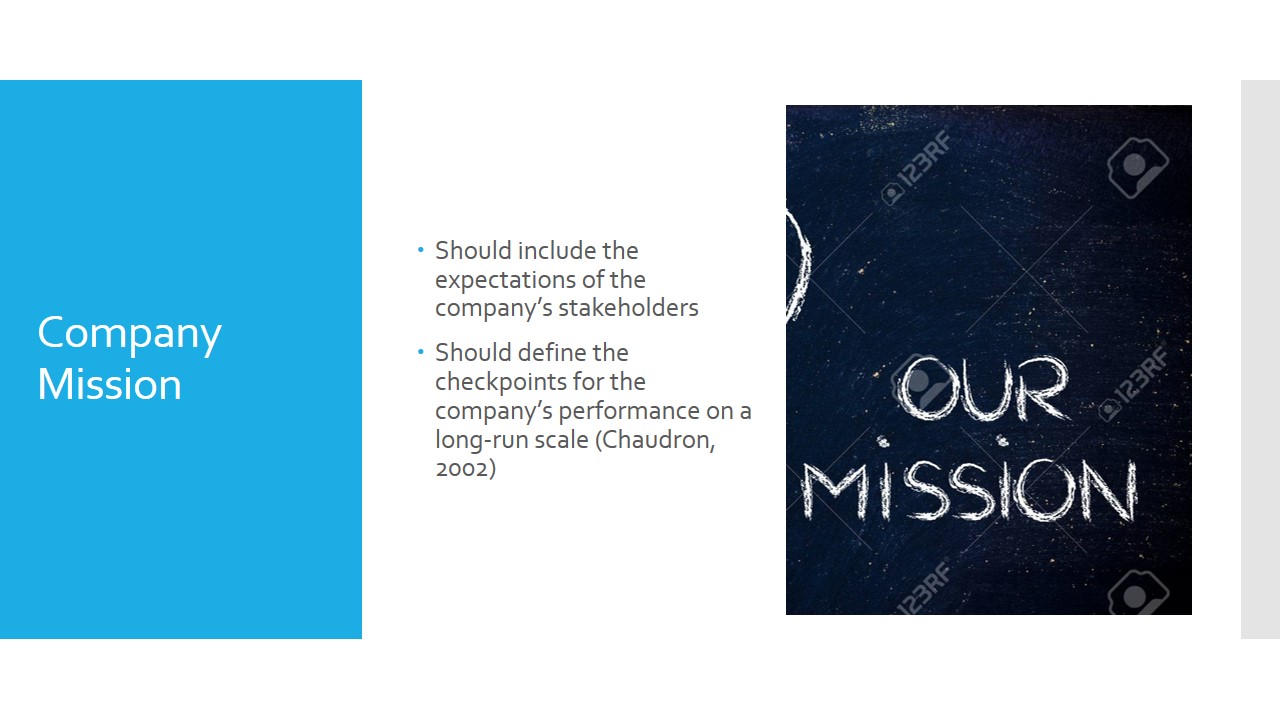
Company Goals and Philosophy
- There are key three goals that characterize the company: survival, growth, and profitability.
- It is inextricably linked to the mission statement and can ultimately become one of the essential parts of the latter (Chaudron, 2002).
- It may be an unwritten but pervasive code of behavior that explicitly responds to the requirements of the company’s philosophy (Chaudron, 2002).
There are key three goals that characterize the company: survival, growth, and profitability. Even though the mission statement may not claim these aspects explicitly, it is important to realize that the stakeholders’ aims cannot be reached in the case where the organization cannot survive the competition and the impact of internal and external disturbances (Chaudron, 2002). The problem with the concept of growth consists in the fact that it is recurrently ignored by decision-makers while being one of the core criteria in terms of the company’s growth and profitability. Commonly, the latter two are more characteristic of business organizations that focus on financial gain and tend to overlook other interests in most cases.
Another critical concept is company philosophy. Sometimes, it can also be called the company creed. This concept is inextricably linked to the mission statement and can ultimately become one of the essential parts of the latter (Chaudron, 2002). The core objective of an all-inclusive company philosophy is to specify the values, philosophical priorities, and the basic beliefs that should be perceived essential by any member of the organization. For the most part, company philosophies do not differ from one company to another. Some companies approve the use of an unwritten but pervasive code of behavior that explicitly responds to the requirements of the company’s philosophy (Chaudron, 2002). Sometimes, there is also a strict distinction between the role of the corporation and an individual.
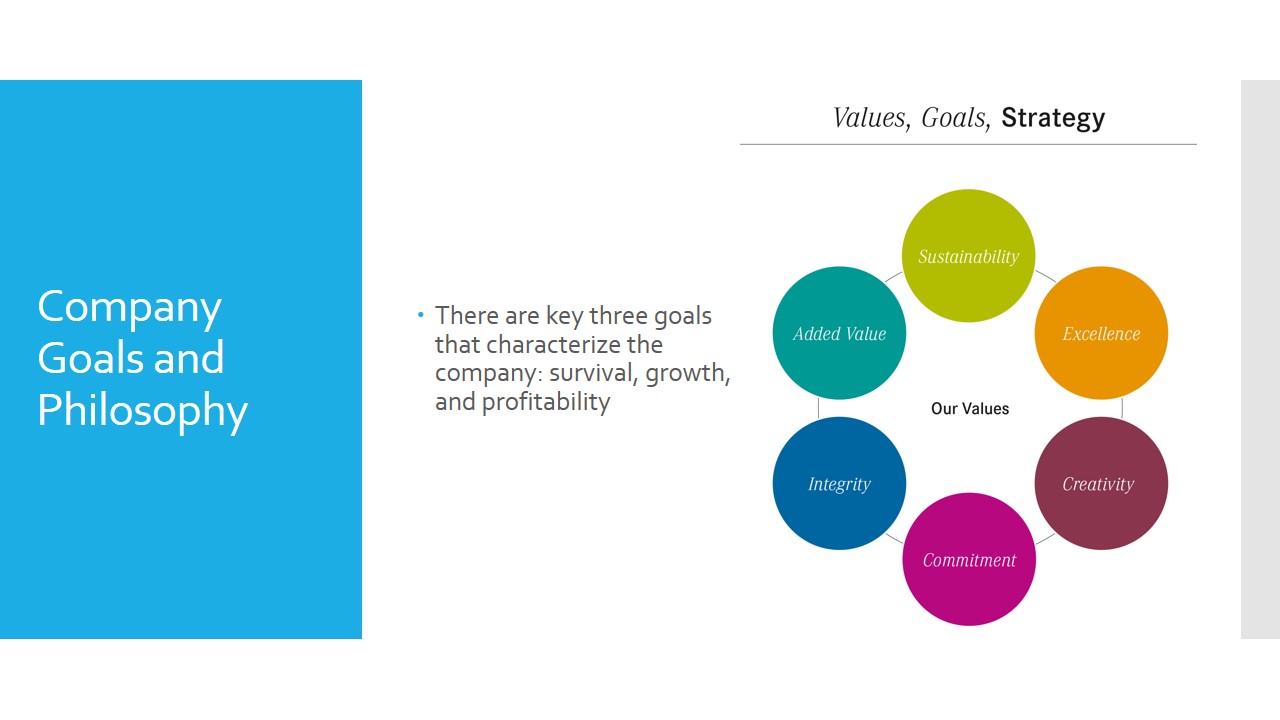
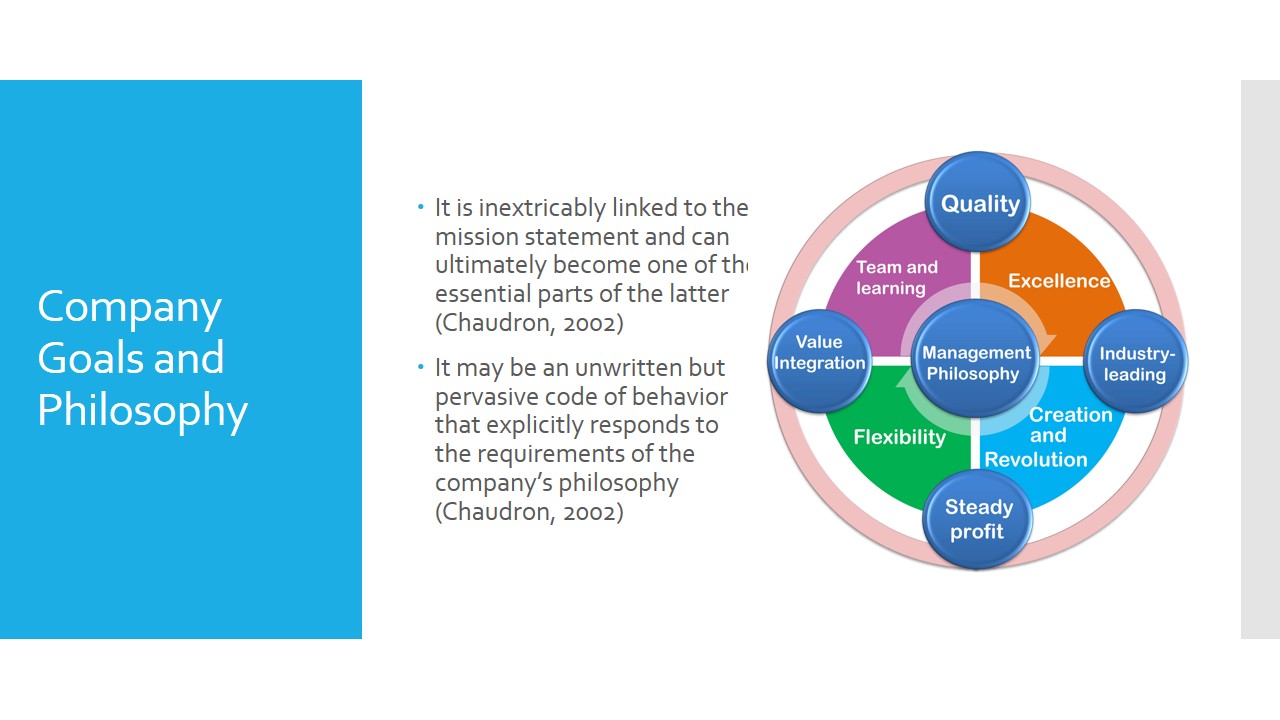
Company’s Customers, Self-concept, and Product Quality
- The company should objectively evaluate its strengths and weaknesses and compare the obtained data to the information received from the area of practice (Chaudron, 2002).
- One of the most important values of any company is the habit of prioritizing customers’ interests and getting them in line with the perspectives of the organization (Chaudron, 2002).
- It should be achieved and maintained in order to support company’s image and broaden the customer base over the time (Chaudron, 2002).
In order for a company to become successful, it should recurrently monitor its ability to relate functionally to the requirements of its external environment. In order to gain as much profit as possible, the company should objectively evaluate its strengths and weaknesses and compare the obtained data to the information received from the area of practice (Chaudron, 2002). The latter makes up the notion of the company’s self-concept and is perceived as one of the most important business aspects. Nonetheless, it is not widely included in the essential strategic management theories. On the other hand, the company’s self-concept is often present in the impressions made by mission statements.
Another core value that is recurrently stressed as one of the most important values of any company is the habit of prioritizing customers’ interests and getting them in line with the perspectives of the organization (Chaudron, 2002). This kind of focus on customer satisfaction is guaranteed to provide the company with competitive advantages and adhere to the company mission successfully. Quality of the products provided by any company has to be the central point of organizational practices. It should be achieved and maintained in order to support company’s image and broaden the customer base over the time (Chaudron, 2002). The emphasis on the quality of company’s products has to be perceived as a built-in belief that should remain constant at all times.
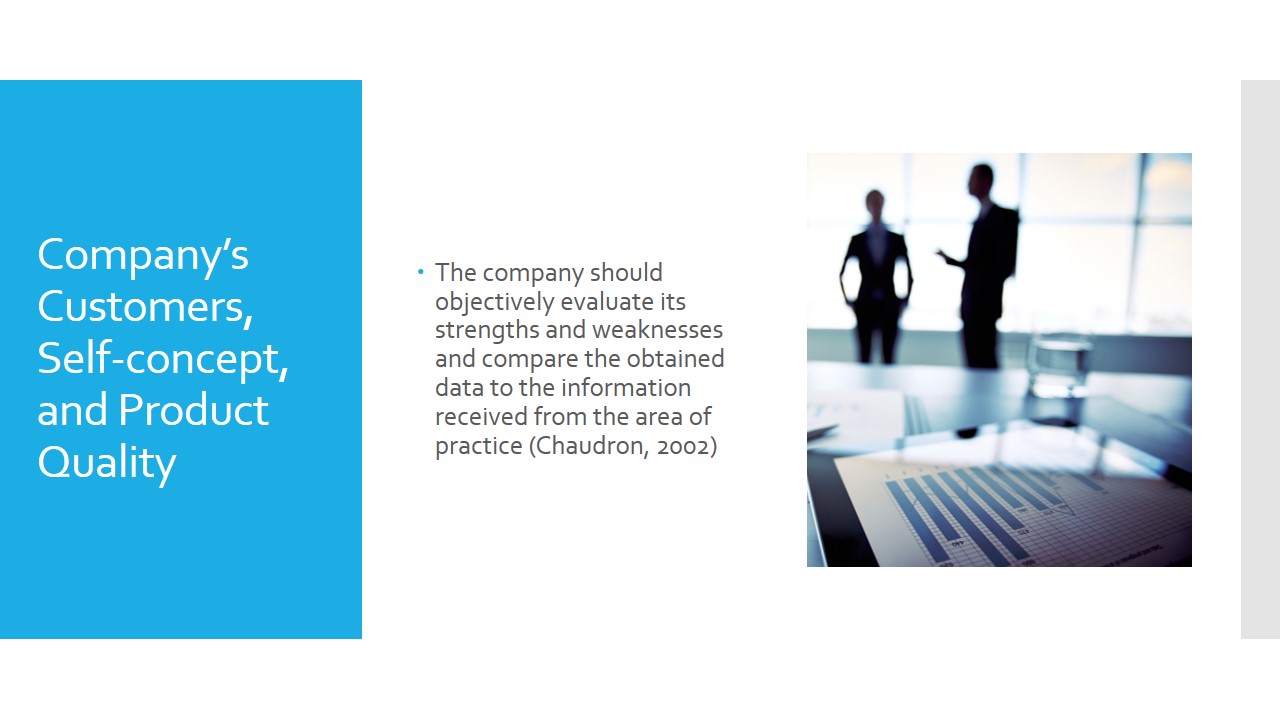
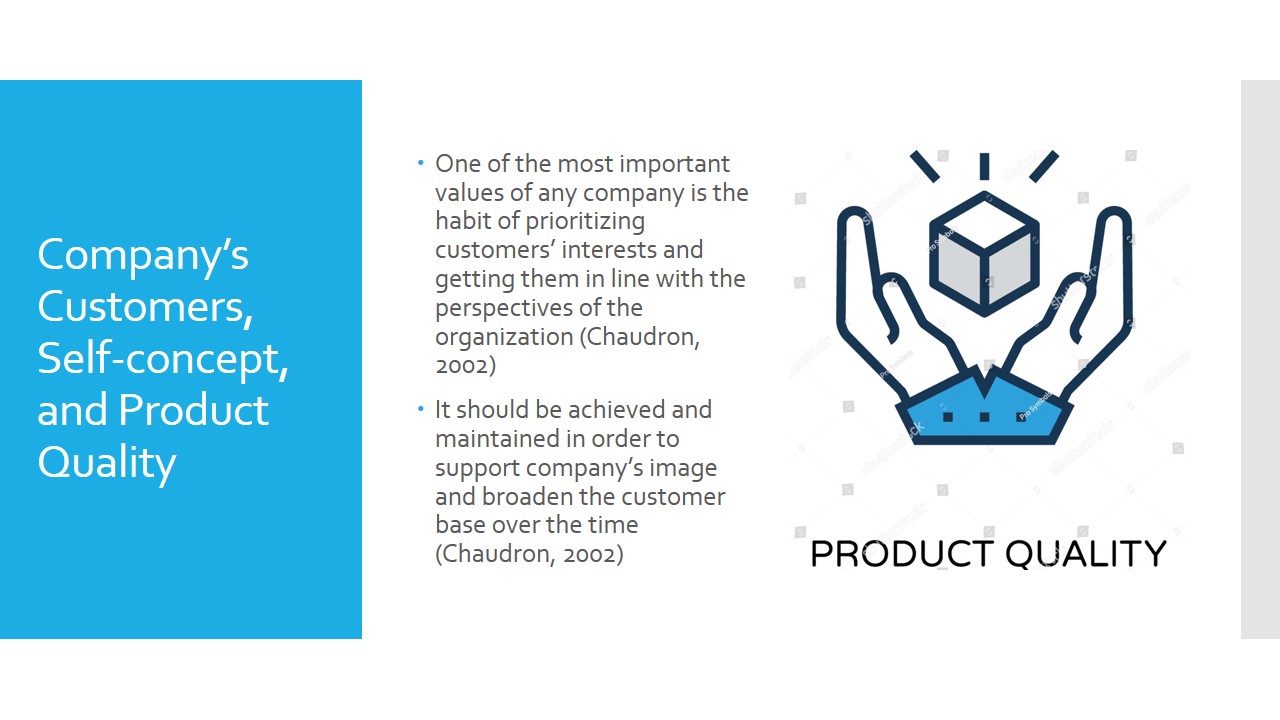
Vision Statement
- Vision statement relates to the objectives of the executive leadership (Chaudron, 2002).
- Vision statement and its mission counterpart are often compiled into a single statement so as to facilitate the document.
- A vision statement is a single sentence that all-inclusively and memorably describes the core values and aspirations of the organization (Chaudron, 2002).
- Sometimes, companies have to recompile the vision statement so as to make sure that it reflects the interests of both the customers and company.
Another important concept that may critically affect any organization’s practices is the development of a decent vision statement. The key difference between the latter and the mission statement consists in the fact that the vision relates to the objectives of the executive leadership (Chaudron, 2002). In other words, it is a strategic intent of the organization that is formulated on the basis of the motivating aspects of organizational practices. It has to focus on the availability of the resources that may ensure that the company will be able to achieve its objectives. It may also happen that the vision statement and its mission counterpart are compiled into a single statement so as to facilitate the document.
If we separate the mission statement from the vision statement, we may see that most often, a vision statement is a single sentence that all-inclusively and memorably describes the core values and aspirations of the organization (Chaudron, 2002). In some cases, vision statements can be used to refocus the attention of stockholders and the public. This may be necessary when the company’s current practices may negatively affect their corporate image and lead to financial losses. Sometimes, companies have to recompile the mission statement and its vision counterpart so as to present it to the shareholders and make sure that it reflects the interests of both the customers and company.
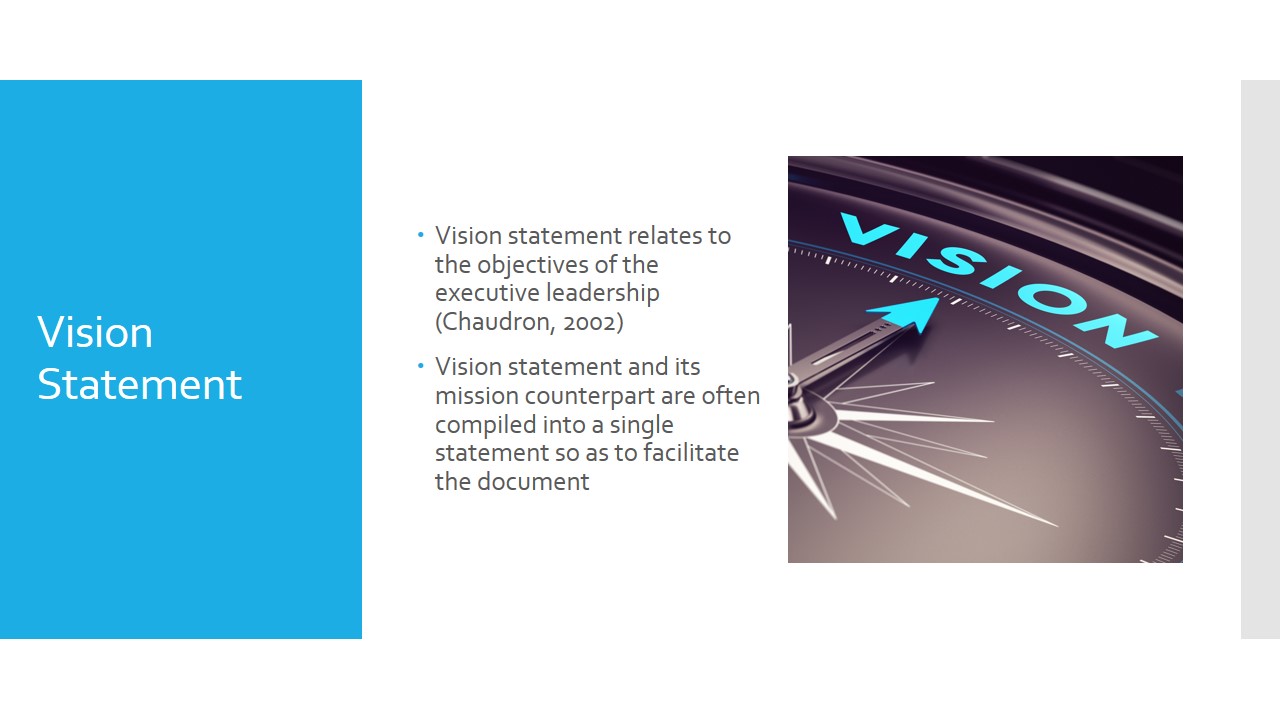

Agency Theory
- Agency theory is a set of intricate ideas that transpire when the wishes of the owners are not granted, and the agents become too expensive.
- Owners tend to find the ways to maximize stock value.
- Executives are often free to pursue their own interests (Chaudron, 2002).
- One of the ways to solve this issue is to pay executives extra.
Agency theory is a set of intricate ideas that transpire when the wishes of the owners are not granted, and the agents become too expensive. Nonetheless, it only happens when there is a separation between the principals (owners) and agents (managers). An agency relationship is always dependent on both parties involved in the dealings even though managers can delegate the process of decision-making (Chaudron, 2002). One of the most important points about agency theory is that owners tend to find the ways to maximize stock value. The strategies that presuppose stock appreciation are characteristic of managers as well. Incorrect behavior may significantly deteriorate the company’s standing and decrease stock performance.
Also, agency problems may occur. This happens when the owners do not get the chance to monitor the performance of the organization and delegate this function to the managers. Due to the fact that the former are not required to observe all the executive actions, they are often free to pursue their own interests (Chaudron, 2002). In this case, the organization is exposed to the moral hazard problem. Some of the examples of such behavior are forecast altering, job slacking, and unreasonable personnel manipulation. One of the ways to solve this issue is to pay executives extra. By doing this, the company will be able to secure their loyalty and stop them from exploiting the company’s resources.
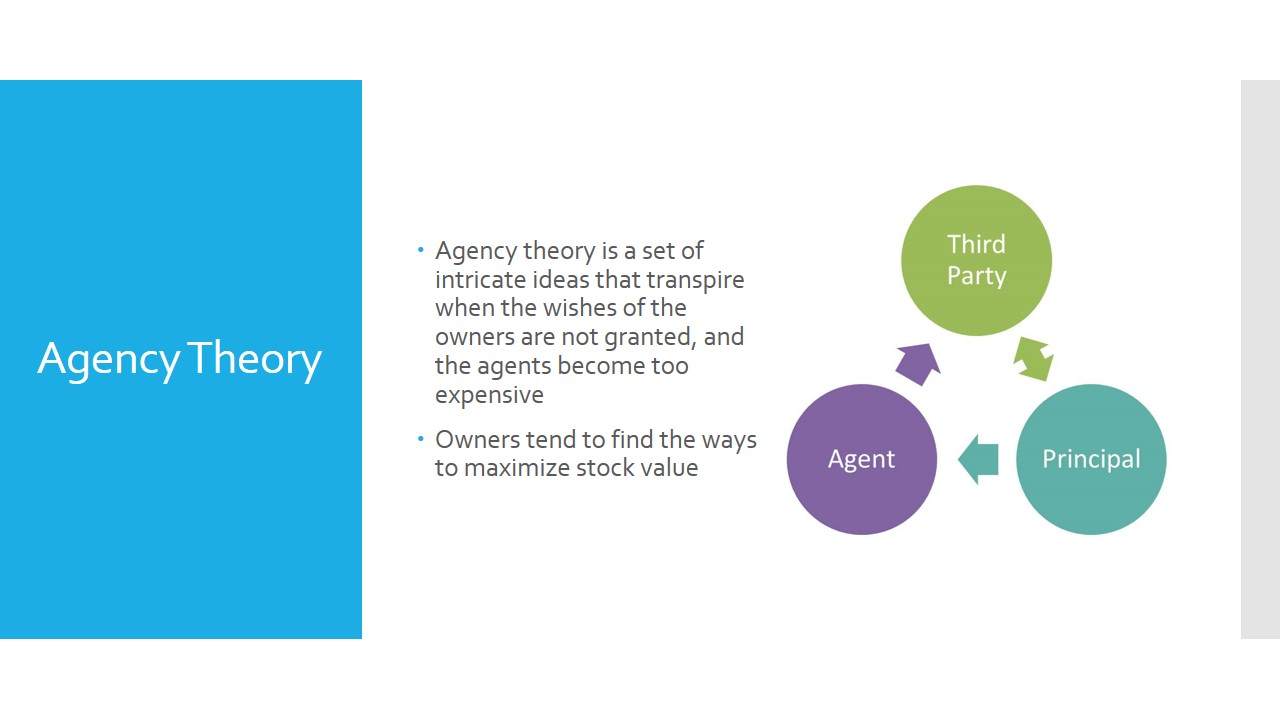
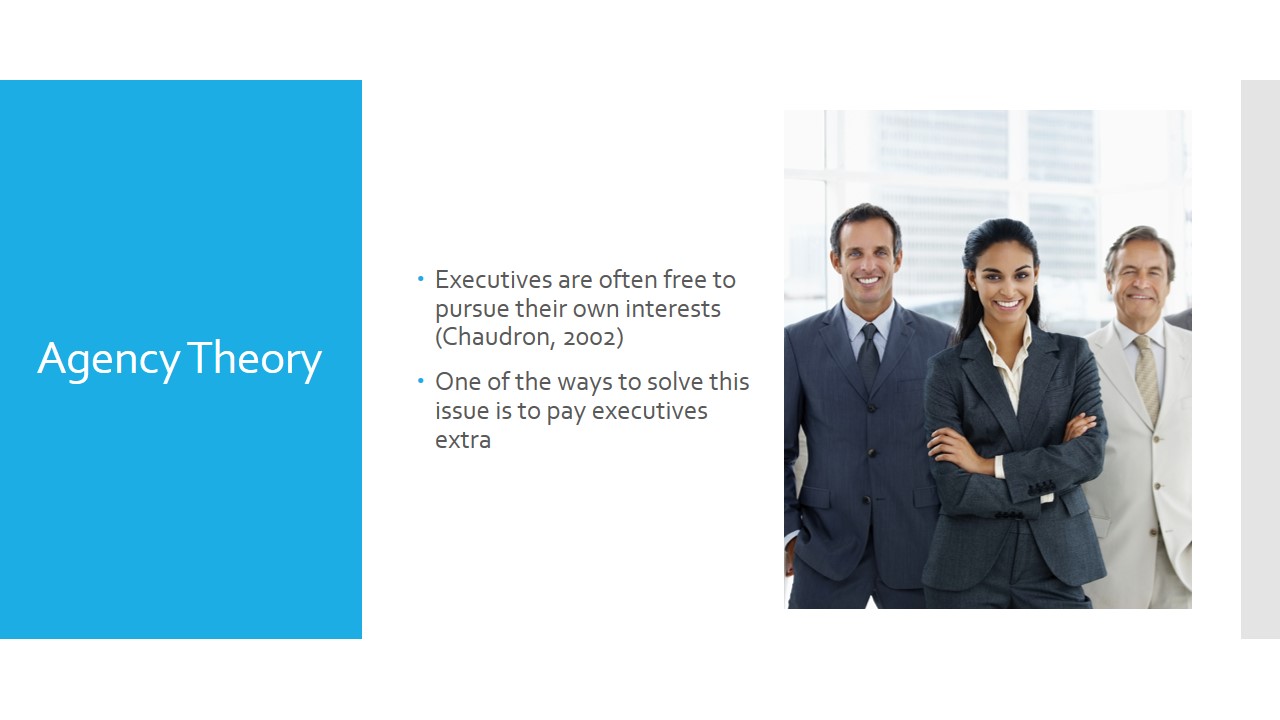
Reference
Chaudron, D. (2002). No more darn buzzwords: Keys to successful organized change. San Diego, CA: Organized Change.